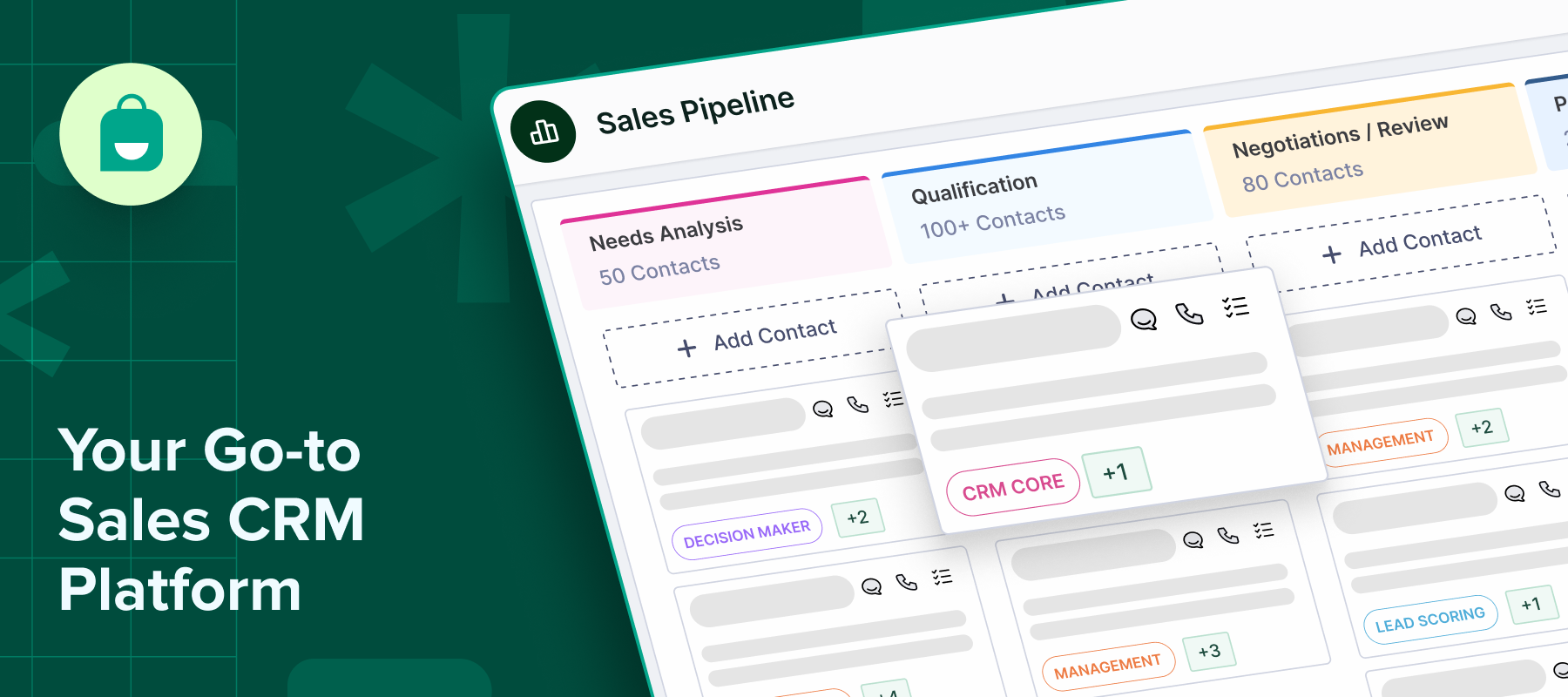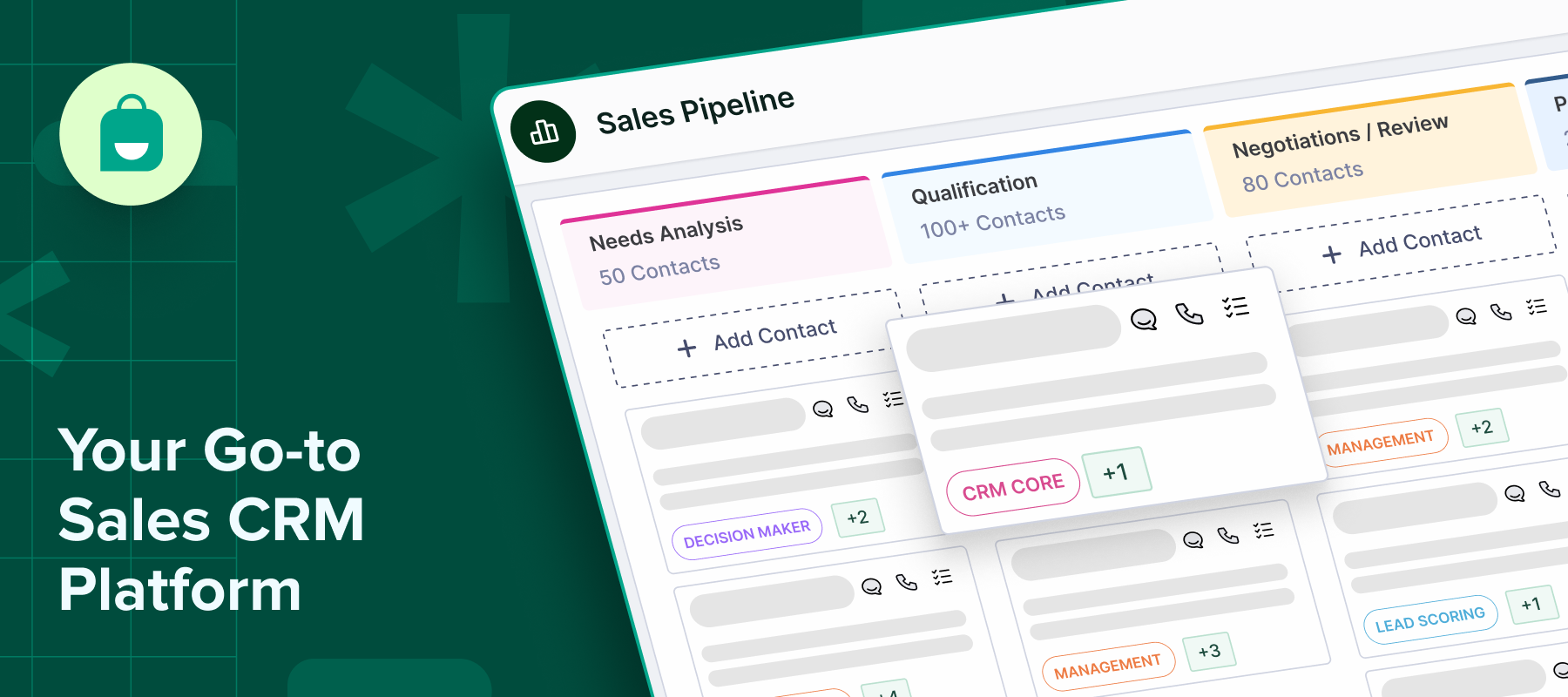Sales teams constantly juggle leads across emails, calls, and chats, and CRM tools bring them all under one roof.
Customers have diverse preferences for communication channels, making it challenging for sales teams to collate and track all interactions manually via spreadsheets. CRM tools are a must today, if not the most critical part of your sales stack.
A CRM saves them the trouble of scattered spreadsheets and missed follow-ups that lead to lost deals. The tool helps centralize data and streamlines the process of managing and closing leads, available in both free and paid options.
In this post, we break down the key differences between free and paid Sales CRMs to help you make the right choice for your business.
Understanding free sales CRM
CRM or a customer relationship management tool’s free version comes with a host of basic yet essential features, at no cost. Even though it has a limited set of functionality, it covers the most critical features that aid contact management, lead tracking, and organizing, enough for sales folks to explore the true potential of CRMs.
Here’s everything that comes with free sales CRM:
Core features typically included
The basic functionalities that free CRMs offer include contact management, deal tracking, task reminders, and simple reporting. They make it easy for the sales team to keep up with the prospects, follow up, and nurture them, all the while ensuring nothing is bypassed.
Ideal use cases
Teams that function on a tight budget or do not have complex requirements beyond the most mundane lead management tasks will find value in a free version, making them a great option for freelancers, small startups, or businesses in the early stages of growth.
Free CRMs help set a decent foundation for lead management and are the stepping stone for businesses that plan to scale.
Examples of free CRMs
The most popular choices of free CRMs at the moment include HubSpot’s free plan, Zoho CRM Free Edition, Freshsales Free, and Bitrix24.
They have been the go-to tool for a diverse range of small companies that want to set up and organize their sales functions at absolutely no cost because the platforms offer robust features to get started.
Advantages
The showstopper advantage or the primary reason companies choose free CRMs is, no financial commitment. The second most attractive perk is easy and quick setup, where teams can get started almost instantly.
And, most importantly, free CRMs are the best way to test and gauge if you need a CRM, what type of CRM features best complement your business, and if investing in CRM software makes sense for your business.
Limitations to be aware of
Free tools are a synonym for limited features. Free CRMs sure are appealing, but they come with limitations like user caps, restricted features, and limited support. Its automation capability is also far from the sophisticated workflows of a paid CRM. So, while they are good to test out, they are not ideal for growing startups with a complex set of requirements.
Exploring paid sales CRM
Paid sales CRMs include advanced features, prompting sales reps to do more than simple lead management, i.e., automation, integrations, custom dashboards, and more capabilities, that improve the efficiency and impact of nurturing and closing leads.
What you get in paid plans
The advanced features of paid CRMs include in-depth analytics, sales automation, and customizable workflows. Sales reps, beyond bringing their leads in one platform, can automate repetitive tasks, better track customer interactions to keep them impactful, and iron out any hiccups in sales processes.
The add-on features include better integration capabilities with other tools in your tech stack and enhanced team management features that make collaboration a breeze.
Ideal for
Businesses that are looking to scale, have large sales teams, deal with longer and more complex sales cycles, and use multi-stage pipelines benefit most from a paid CRM. The advanced features are a boon to companies that have outgrown the basics and need detailed tracking and coordination.
Examples of paid CRMs
The go-to paid CRM tools for the masses include Salesforce, Pipedrive, ActiveCampaign, Zoho CRM Enterprise, and HubSpot Sales Pro. They offer powerful features and are trusted by fast-growing startups and enterprise-level organizations alike.
Key differences between free and paid CRM
Both versions help manage customer relationships, but here’s how they differ:
Feature set and customization
Free CRM’s standard features are contact management, task tracking, and basic pipelines, which work great for staying organized but lack flexibility.
Paid CRMs, on the other hand, offer advanced workflows, robust automation, and deep customization, allowing teams to tailor the system to match their unique processes.
For example, a growing SaaS startup can automate lead assignments based on geography or deal size using workflow automation of paid plans.
User limits and access control
There’s a cap on users for Free CRM, which does not concern solo founders or tight-knit teams. Paid plans are flexible for users, plus they offer role-based access controls that dictate important processes in larger teams with different data needs.
For instance, you can customize what your sales, marketing, and support teams have access to, according to their needs, in the same paid version of CRM software.
Reporting and insights
Reporting capabilities are limited to surface-level metrics with free CRMs, like the number of deals or basic sales totals. Paid CRMs offer customizable dashboards, advanced filtering, and even predictive analytics that provide insights for critical data-driven decision-making.
Factors to consider when choosing a CRM
Here are some key factors to help you find your business fit between a free and paid CRM:
Business stage and growth plans
Understand your business needs today and tomorrow. If basic features last you a long time, free CRM would suffice. But if you have expansion goals in mind for the future, investing in a paid version early would be a smart move, saving you the headache of switching platforms later.
Team size and sales complexity
If the only object of your small or solo business is to track leads, a free CRM is a good option. Businesses with multiple reps, departments, or customer journeys across regions or channels need a paid CRM that supports team collaboration, segmented pipelines, and more complex workflows.
Budget availability
If you are testing the waters and have yet to establish your sales processes and strategy, a free CRM with no financial commitment is ideal. But if you have a mature process and budget allocation, you can do more with a paid CRM to deliver better ROI.
Conclusion
Starting with a free CRM can be a smart move for many businesses.
But, functioning with a limited set of features can barricade your business growth. So, you must keep an eye out for indicators that scream you must upgrade now, like when your team grows beyond CRM’s user limits, missing features your sales team needs, or reporting gaps.
Looking for a reliable and scalable CRM solution?


